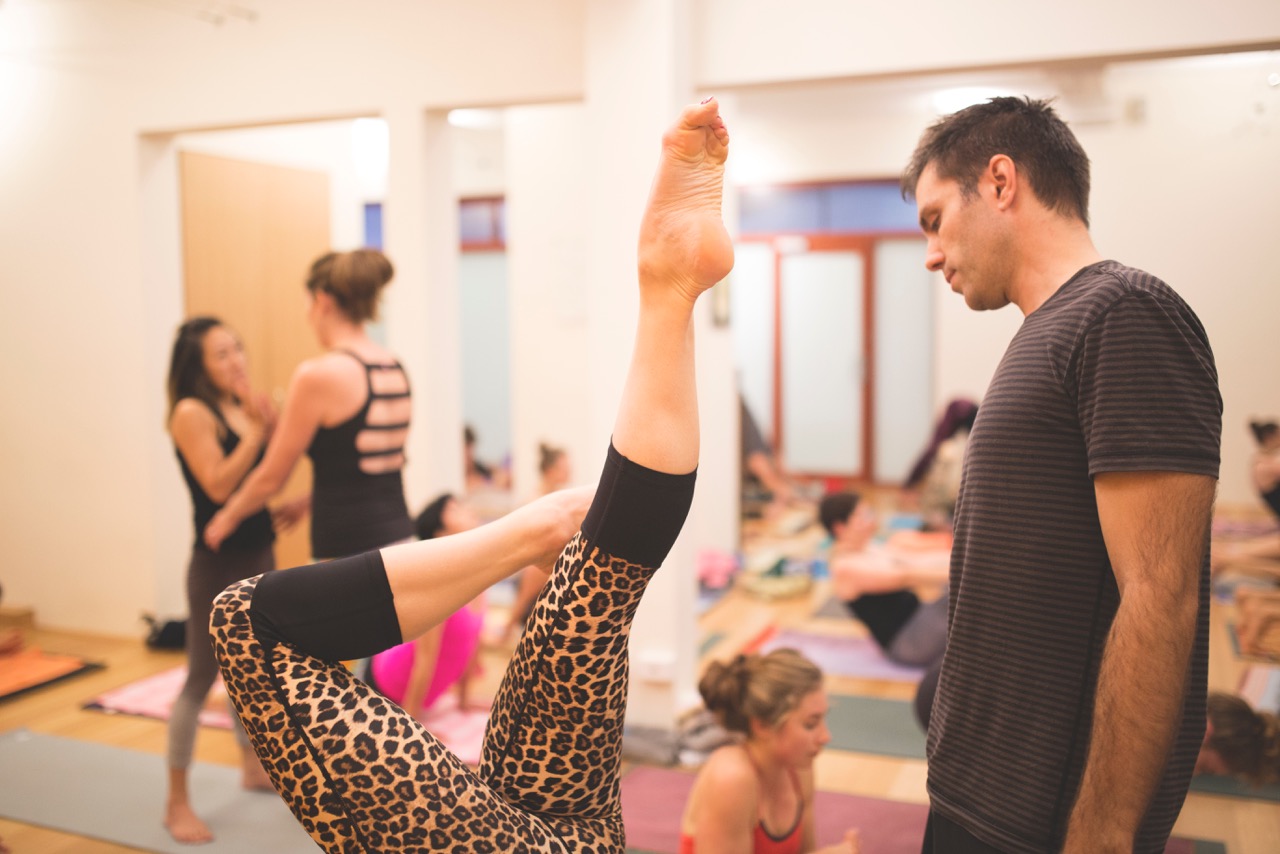
You Are Not Alone: Notes from the Mysore room on getting unstuck
A recent question from a student prompted me to start thinking about how to work with the feeling that you are just dragging your feet through mud during practice and finding it hard to get momentum. She thought she might be the only one feeling this way…
Knowing that many of you have experienced this at some point my first response with students is to normalise this kind of feeling – I too sometimes just feel so stuck, exhausted and like I couldn’t possibly do the next posture that awaits me. Often in the Mysore class room its easy to think you are alone in whatever version of mental torture you have going on. Well, you aren’t alone. No one who is just unbelievably happy every moment of their life gets up everyday at 5am in order to work through a demanding sequences of postures like we do. There needs to be a little bit of suffering to commence such an undertaking.
The Mysore classroom looks like a very physical and performative space with people moving and breathing, there is often a cumulative and collective energy and intensity in the room. In yoga we call it tapas, spiritual heat. It is easy to think with everything that is going on and the energy surrounding us that we are the only ones taking a rest, needing to pause to collect ourselves and pull ourselves out of the darkness we feel ourselves sinking into.
So while you may take some solace that you are not alone in the mental drama that sometimes silently unfolds on your mat, it is important to examine why this is happening (briefly) and how we work with it.
Firstly dedicating ourselves to a six day a week Mysore practice can be hard because we are breaking old habits. Ways of thinking that our mind has clung to for years. These stories we tell ourselves “I’m so lazy”, “What’s wrong with me” or “Why can’t I just get through this like everyone else” are examples of those mental habits. Whatever it is you are telling yourself during practice, you have told yourself many variations of this dialogue for probably some time. It is like water flowing over the same rock for years, it creates a groove, and becomes natural, effortless. The story becomes embedded. It will take work for the story to not ‘stick’.
Whatever stories or thoughts are getting in your way are most likely linked to one of the six poisons of the spiritual heart. These are:
kama, krodha, moha, lobha, matsarya, and mada (desire, anger, delusion, greed, envy and sloth)
In order to burn up these six poisons we must practice. However it is a catch 22 kind of situation. We are so stuck and deeply rooted in the ways of thinking and interpreting (situations, sensations, experiences) that the six poisons have a strong hold on us and we find it near to impossible to undertake what needs to be done for the actual burning away of these poisons to occur.
Basically we need to stand on the precipice of breaking up with these stories and habits and throw ourselves into practice. The thoughts we struggle with have power over us because we believe them in some way, and because we have been thinking some variation of them for a long time. We basically need to break the habit, and to my mind the best way to do that is not necessarily incrementally, but by adopting the fullness of the Ashtanga method. If we practice three days a week instead of six it can be tricky. If you want to learn how to not believe your thoughts and to know you are more than your thoughts, then you need to dedicate time every day to patiently allowing whatever will arise, to arise and process through you. No modifications of practice, not less postures, not switching practice days. Nothing. Make the commitment (even if you are practicing at home) and follow through.
Simple things – tell people you will meet them at the studio for coffee after practice. Register your name on the list so its obvious you had a sleep in rather than coming to class, put your alarm on the other side of the room, give yourself a reward if you practice each day, practice a little more quickly – sometimes staying moving clears the mind out. The mind is sneaky, it will always find ways to entice us back to those comfortable, but perpetually unhelpful thought patterns.
I’m not saying it is easy. It has taken a long time for me to practice no matter how I feel (unless I have a fever). Getting on your mat is always the better choice. Have faith, believe in something bigger than yourself, know that this is a shared experience, you are not in it alone, although it may feel like.
And forgive yourself when you don’t do what you know is good for you and start again. Not the next month, or the following week, but the next day. Eventually the time will come when it feels natural, and you are more ‘YOU’ with practice then without. Practice teaches us not to believe our thoughts, it opens our eyes to who we are beyond those habitual thought patterns. Practice frees us. But we must have faith in the practice, in ourselves and in the fact that things change. No matter how bad it feels, it will get better. That doesn’t mean it won’t get hard again, but maybe we will find it a bit easier to deal with.
Jean x